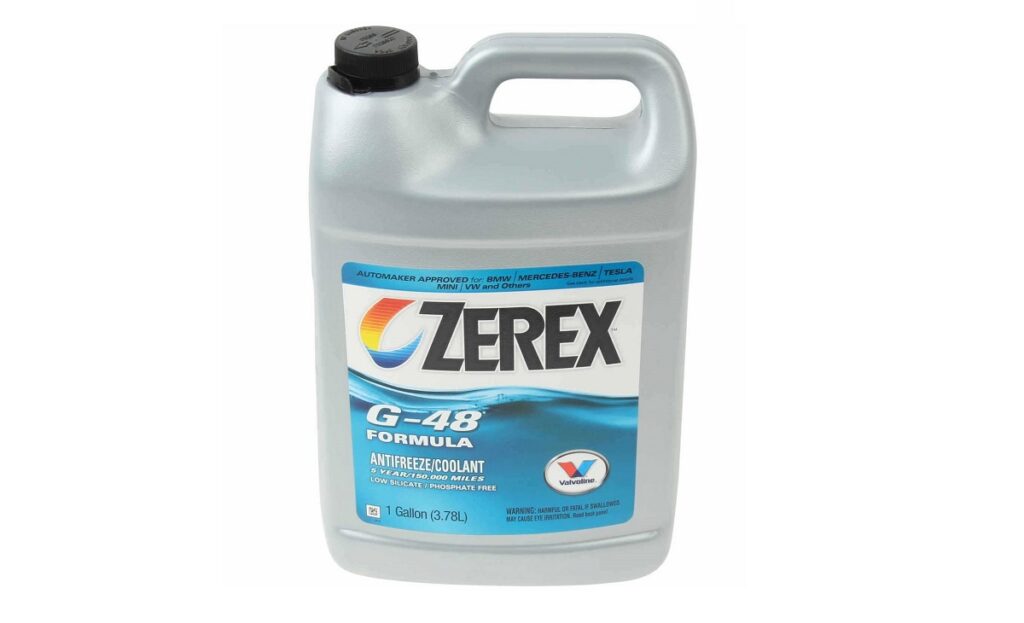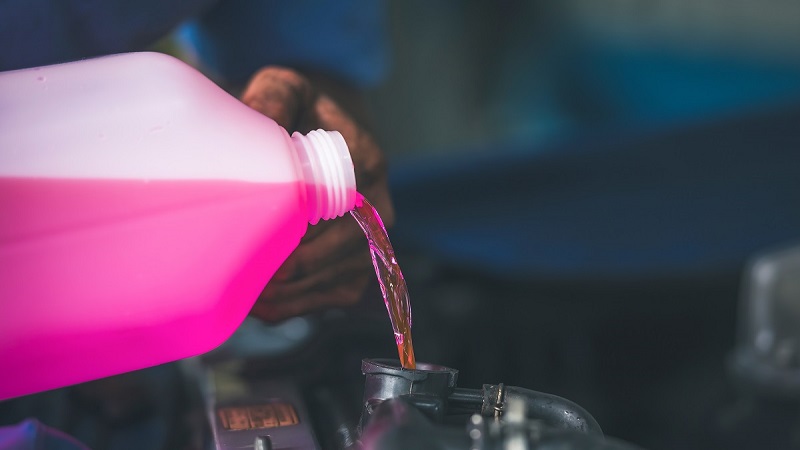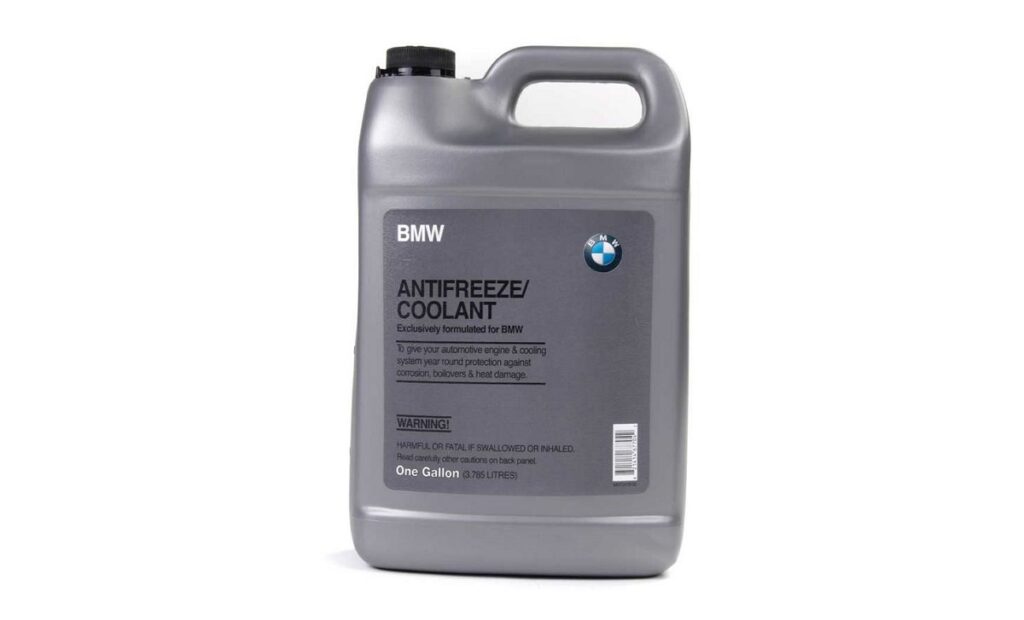Your engine coolant is responsible for keeping your engine running smoothly and preventing overheating. Over time, the coolant can become contaminated with debris and lose its effectiveness. This is where coolant flushes come in. In this short guide, we will discuss the importance of coolant flushes and why they should be a part of your regular car maintenance routine.

Why Coolant Flushes are Necessary
Coolant flushes are necessary because the coolant in your engine can become contaminated with rust, dirt, and other debris over time. This contamination can cause the coolant to lose its effectiveness, which can result in engine damage or overheating. By flushing the coolant system regularly, you’ll prevent the accumulation of this debris and feed the engine with fresh coolant that it needs to operate in the long term.
That said, it’s imperative that you use good quality coolant when doing a coolant flush. Your BMW’s manual will tell you exactly what formulation to get. Check our catalog for a list of high quality coolants designed specifically for BMW vehicles.
What Happens When You Leave the Coolant Inside the Engine for Too Long?
If you leave old coolant inside your engine for too long, it can become acidic and corrode the internal components. This corrosion can lead to leaks, which can cause the engine to overheat. Overheating can cause severe damage to your engine and can lead to costly repairs. By flushing the coolant system regularly, you can prevent this type of damage from occurring.
Symptoms of Old Coolant and the Damage It Can Cause
Over time, coolant can become contaminated and lose its effectiveness. This can lead to a number of symptoms, including:
Rust and Corrosion
Old coolant can cause rust and corrosion to build up inside the engine. This can lead to damage to the internal components of the engine. Rust and corrosion can be caused by a number of factors, including the age of the coolant, the type of coolant used, and exposure to contaminants like dirt and debris.
Over time, rust and corrosion can cause serious damage to the engine, including leaks in the radiator, heater core, or other parts of the coolant system. Rust and corrosion can also damage the water pump and other internal components of the engine. In severe cases, the engine may need to be replaced.
Overheating
As coolant becomes contaminated, it loses its ability to dissipate heat. This can cause the engine to overheat and can lead to serious damage. Overheating can be caused by a number of factors, including low coolant levels, a faulty thermostat, or a clogged radiator.
If the engine overheats, it can cause damage to the cylinder heads, the head gasket, and other internal components of the engine. Overheating can also cause the engine oil to break down, which can lead to further damage to the engine. In some cases, overheating can cause the engine to seize, which can be catastrophic.
Reduced Fuel Efficiency
Contaminated coolant can cause the engine to work harder than it needs to. This can lead to reduced fuel efficiency and higher costs at the gas pump. This is because the engine has to work harder to overcome the resistance caused by the buildup of contaminants in the coolant.
Reduced fuel efficiency may not seem like a serious problem, but it can add up over time and lead to higher costs for the vehicle owner. In addition, the increased workload on the engine can cause it to wear out faster, leading to further damage and costly repairs.
Leaks
Old coolant can cause gaskets and seals to deteriorate, leading to leaks in the engine. These leaks can cause further damage to the engine and can be costly to repair. Leaks can be caused by a number of factors, including rust and corrosion, overheating, and the breakdown of gaskets and seals due to age.
If leaks are left unchecked, they can cause serious damage to the cylinder heads, head gasket, and other internal components. Leaks can also cause the engine to lose coolant, which can lead to overheating.
The Potential Damage Caused By Old Coolant
The symptoms of old coolant can lead to serious damage inside the engine. Here are some more details on the types of damage that can occur:
Cracked or Warped Cylinder Heads
Overheating caused by old coolant can cause the cylinder heads to warp or crack. The cylinder heads sit on top of the engine block and are responsible for sealing the combustion chamber and allowing fuel and air to enter and exit the engine. If the cylinder heads are damaged, they may no longer be able to seal the combustion chamber properly, leading to leaks and further engine damage.
Blown Head Gaskets
The head gasket is a critical component that seals the cylinder head to the engine block. If contaminated coolant is left inside the engine for too long, it can cause the head gasket to fail.
When the head gasket fails, coolant can leak into the engine oil, which can cause serious damage to the engine. Modern engines are not designed to be lubricated by anything that even resembles water. With engine coolant in your oil, all the moving parts of your engine will suffer higher levels of friction, which can ultimately cause them to fail.
Damage to the Water Pump
The water pump is responsible for circulating coolant throughout the engine. If old coolant is left inside the engine for too long, it can cause the water pump to wear out prematurely. This can lead to a loss of coolant and overheating, which can cause further damage to the engine.
In order to avoid these types of damage, it’s important to flush the coolant system regularly and to use the right type of coolant for your vehicle. Speaking of which.
The Importance of Using the Right Coolant

It’s important to use the right type of coolant for your vehicle, as using the wrong coolant can cause damage to the engine. Coolant is available in different colors, such as green, orange, and pink.
Each color represents a different type of coolant, and using the wrong type can cause corrosion or damage to the engine. Your vehicle’s owner’s manual should specify the correct type of coolant to use. If you’re not sure which coolant to use, it’s best to consult with a professional mechanic.
BMW Long-Life Coolants — Do They Work?
BMW long-life coolants are designed to provide extended protection for the engine, with service intervals of up to 100,000 miles or 5 years, depending on the specific coolant used. These coolants are formulated with advanced additives and inhibitors that help protect against corrosion, cavitation, and other forms of engine wear.
In general, BMW’s long-life coolants have been shown to work as advertised, providing long-lasting protection for the engine. However, it’s important to note that the effectiveness of the coolant can depend on a variety of factors, including the age and condition of the engine, the driving conditions, and the quality of the coolant used.
One potential issue with BMW’s long-life coolants is that they may not be suitable for all types of driving conditions. For example, if you frequently drive in extreme temperatures or engage in heavy towing or hauling, your engine may require more frequent coolant changes to ensure optimal performance and protection.
Airing Out the System — Don’t Forget This!
After a coolant flush, it’s important to air out the system to ensure that all of the air pockets have been removed. Air pockets can cause overheating and engine damage, so it’s crucial to ensure that the coolant is flowing properly throughout the engine.
To air out the system, turn on the engine and let it run for a few minutes, then check the coolant levels and top up if necessary.
Get the Right Coolant at Bimmers.com
In conclusion, coolant flushes are an essential part of car maintenance. By regularly flushing the coolant system, you can prevent engine damage, overheating, and costly repairs. It’s important to use the right type of coolant for your vehicle and to air out the system after a flush. By taking these simple steps, you can keep your engine running smoothly and extend the life of your vehicle.
Here at Bimmers.com, we offer a wide range of coolants designed to meet the needs of modern BMW vehicles. Head over to our store, select your vehicle from the drop-down menu, and you’ll find coolants that match your car.






